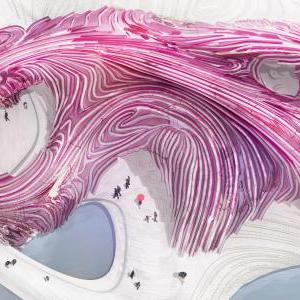This year the Design Research Laboratory (DRL) concluded the final year of the four-year design research agenda Proto-Design, which investigated digital and analogue forms of computation in the pursuit of systemic design applications that are scenario- and time-based. Considering controls systems as open acts of design experimentation, the DRL examines production processes as active agents in the development of architecture. Behavioural, parametric and generative methodologies of computational design are coupled with physical computing and analogue experiments to create dynamic and reflexive feedback processes. New forms of spatial organisation are explored not as type- or context-dependent but by examining scenarios that evolve as ecologies and environments that seek adaptive and hyper-specific features.
This performance-driven approach aims to develop novel design proposals concerned with the everyday. The iterative methodology of the design studio focuses on the investigation of spatial, structural and material organisations, engaging with contemporary discourses of architecture and urbanism. Four research studios run in parallel, exploring the possibilities of Proto-Design. Theodore Spyropoulos’ studio, Synthetic Natures: Behavioural Machines, investigates behaviour as the means to explore self-regulating and deployable soft systems. Parametric Semiology 2 – Habitat as System of Signification, led by Patrik Schumacher, focuses on how the societal function of urban and architectural design can act as an innovative ordering and framing of communicative interaction. Robert Stuart-Smith’s studio, Behavioural Matter, explores how non-linear design processes may be instrumentalised to generate a temporal architecture with a designed life-cycle. Reconsidering Elementarism, led by Philippe Morel, addresses the relationships between technology, architecture and mathematics by revisiting research on Elementarism in the 1920s and its cybernetic reinterpretations of the 1960s.
Director
Theodore Spyropoulos
Founder
Patrik Schumacher
Course Masters
Shajay Bhoosan
Philippe Morel
Robert Stuart-Smith
Course Tutors
Pierandrea Angius
Mollie Claypool
Ryan Dillon
Mostafa El-Sayed
Manuel Jiménez García
Jose Sanchez
Technical Tutors
Albert Taylor & AKT
Software Tutors
Torsten Broeder
Paul Jeffries
Tyson Hosmer
Programme Coordinator
Ryan Dillon
Invited Critics
Lucy Bullivant
Helen Castle
Mark Cousins
Didier Faustino
David Jason Gerber
David Greene
Adrian Lahoud
Marta Malé- Alemany
David Ruy
Marcelo Spina
Brett Steele
Albert Taylor
Peter Testa
Tom Wiscombe
Minus 1
Team Name: Minus 1
Project Name: Hexapods
Students: Sofia Amodio Bernal (Mexico), Maricruz Miranda López (Costa Rica), Bridget Munro (USA/UK)
Studio: Philippe Morel with Jose Sanchez
Hexapods is a prototypical construction system, erected using torsion and held in place with tensioned membranes and mag- netic joints. It provides a transitional architectural solution for displaced people; it is tested in peri-urban Addis Ababa, Ethiopia, which is affected by population displacement and growth, and concomitant housing shortages. The conceptual research stems from nomadic African vernacular architecture; its use of knots allows rapid construction and deconstruction of dwellings. These knots were conceptualised into vectors and nodes, and kinetic research led to the torsion system. Hexapods frame is assembled flat, then twisted upright and locked with electro-permanent mag- netic joints; collapse is prevented by a minimal surface membrane. Hexapods can be interconnected, allowing growth and expansion. This system also enables community participation and an expres- sion of cultural identity through the potential application of local materials where the minimal surface is not structurally necessary. Technology such as sensors, smart meters and water and solar energy collection is embedded into Hexapods, facilitating activi- ties like agriculture. A script based on cellular automata studies urban growth patterns for hexapod agglomerations, and shared agricultural and community spaces. Hexapods addresses social problems created by an expanding population.






































































